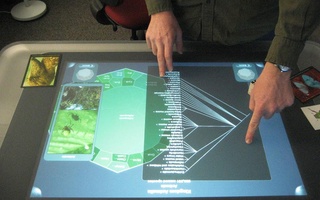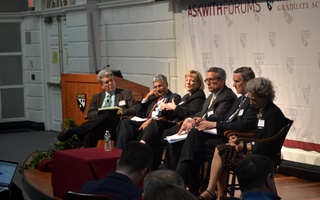The Harvard-Allston Task Force engaged in the first of a round of discussions on community benefits in Harvard’s new Institutional Master Plan for Allston development at a task force meeting Wednesday evening.
The nine-building plan, which Harvard hopes to file with the city around July 1, will include a section devoted entirely to community benefits. University representatives said these will be based on input from residents and the task force.
Allston residents’ opinions of what would constitute community benefits varied widely. Task force member Harry E. Mattison suggested planting trees along Western Avenue, while Allston resident Tom Lally pushed for transportation improvements.
“Allston has been clamoring for mass transit,” Lally said. “Build us a subway from Central Square to Watertown Square that goes through Allston.”
Boston Redevelopment Authority chief planner Kairos Shen said that mass transit is outside Harvard’s jurisdiction.
“The University should not substitute for state government,” he said. Shen added that the University could address transportation issues in Allston with the Harvard-Allston shuttle and the creation of new bike lanes.
Linda Kowalcky, deputy director of the BRA, presented on four preliminary categories of community benefits: public realm and open space, education, neighborhood infrastructure and amenities, and economic and workforce development.
Additionally, Kowalcky mentioned the inclusion of a project that would substantially improve the neighborhood, an idea originally referred to as a “transformational project” in Harvard’s first IMP for Allston in 2007. The 2007 master plan, which included designs for a $1 billion science complex, was halted in 2009 because of financial constraints.
Task force chair Ray V. Mellone echoed the need to pursue projects that could have a large impact on the community.
While the next few task force meetings have been scheduled to cover Harvard’s goals for educational community benefits, Kowalcky said that issues of transportation and housing will also need to be addressed in the coming weeks.
“At these meetings we’re not going to [solve] every housing problem or transportation problem or education problem,” Kowalcky said. “What we can do is try to identify what the key objectives are—what outcomes folks want to see.”
Wednesday night’s task force meeting was the first since two Harvard development plans were approved by BRA board review and was the first meeting this semester devoted entirely to community benefits.
Shen cited complaints about the fast pace of Harvard’s development as the impetus behind community benefit-oriented meetings.
—Staff writer Marco J. Barber Grossi can be reached at mbarbergrossi@college.harvard.edu. Follow him on Twitter @marco_jbg.
Read more in News
White Powder in Envelope Prompts Evacuation at Law SchoolRecommended Articles
-
Allston Residents Refocus AgendaKairos Shen, the popular chief planner for the Boston Redevelopment Authority, came to Allston last night intending to discuss long-term
-
Christian Groups Organize Around RaceFor many minority Christian students, religious organizations that provide a core of shared cultural values imbue their members with a level of comfort that allows them to explore their faiths.
-
 SEAS Group Wins National Science Foundation Grant
SEAS Group Wins National Science Foundation Grant -
Harvard Presents Allston UpdatesAs Harvard moves forward in its planning for Allston, the University updated community members on its progress at a Harvard-Allston Task Force meeting on Monday. But the announcement elicited much skepticism from residents, who said they felt the update lacked crucial details and a sufficient commitment from the University.
-
Harvard Begins Planning for AllstonHarvard initiated an open planning process that will create a new Institutional Master Plan for the University’s development in Allston at the Harvard-Allston Task Force meeting on Tuesday.
-
 Askwith Forum Focuses on Analysis, Improvement of Modern Education
Askwith Forum Focuses on Analysis, Improvement of Modern Education













